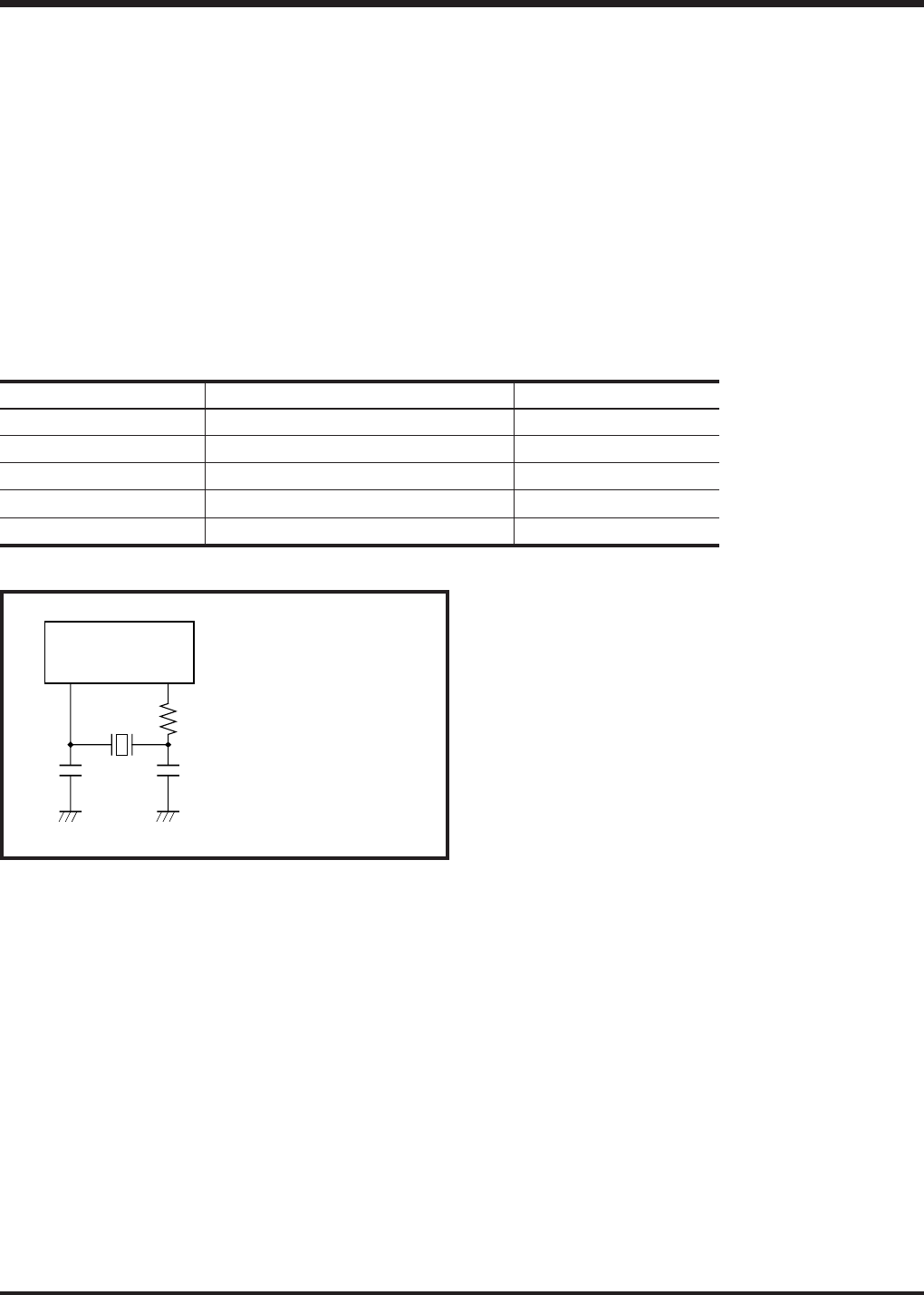
APPLICATION
2-63
4513/4514 Group User’s Manual
2.10 Oscillation circuit
2.10 Oscillation circuit
The 4513/4514 Group has an internal oscillation circuit to produce the clock required for microcomputer
operation.
The clock signal f(XIN) is obtained by connecting a ceramic resonator to XIN pin and XOUT pin.
2.10.1 Oscillation circuit
(1) f(XIN) clock generating circuit
The clock signal f(XIN) is obtained by connecting a ceramic resonator externally.
Connect this external circuit to pins XIN and XOUT at the shortest distance. A feed-back resistor is
built-in between XIN pin and XOUT pin.
Figure 2.10.1 shows an example of an oscillation circuit connecting a ceramic resonator externally.
Keep the maximum value of oscillation frequency within the range listed Table 2.10.1.
Supply voltage
2.5 V to 5.5 V
4.0 V to 5.5 V
2.5 V to 5.5 V
2.0 V to 5.5 V (Note)
2.0 V to 5.5 V (Note)
(System clock)
(f(XIN)/2) Middle-speed mode
(f(XIN)) High-speed mode
(f(XIN)) High-speed mode
(f(XIN)/2) Middle-speed mode
(f(XIN)) High-speed mode
Oscillation frequency
4.2 MHz
4.2 MHz
2.0 MHz
3.0 MHz
1.5 MHz
Note: 2.5 V to 5.5 V for the One Timer PROM version.
Table 2.10.1 Maximum value of oscillation frequency and supply voltage
Fig. 2.10.1 Oscillation circuit example connecting
ceramic resonator externally
Note: Externally connect a
damping resistor Rd de-
pending on the oscilla-
tion frequency. (A feed-
back resistor is built-in.)
Use the resonator
manufacturer’s recom-
mended value because
constants such as ca-
pacitance depend on the
resonator.
4513/4514
XIN XOUT
Rd
CIN COUT


















